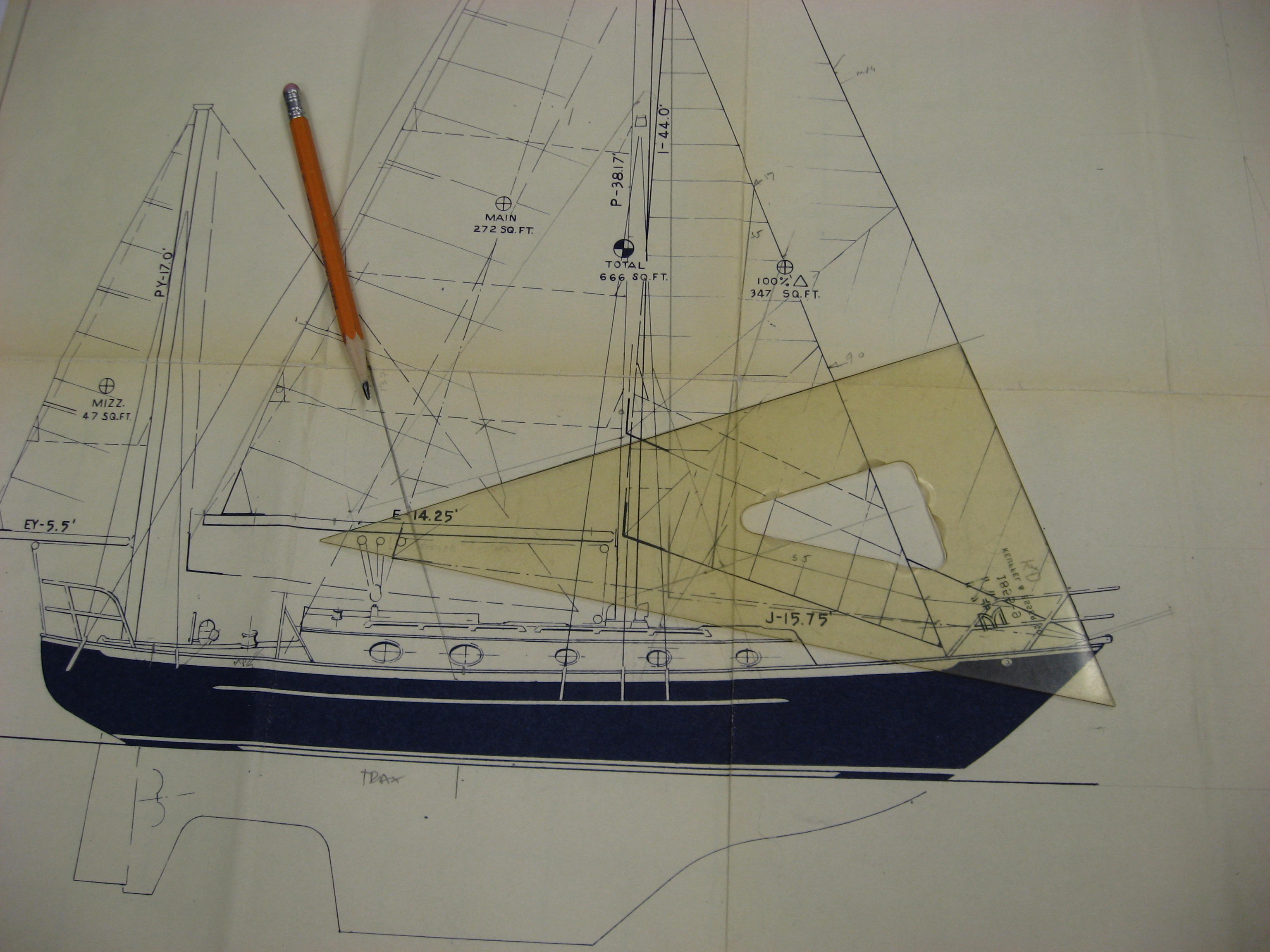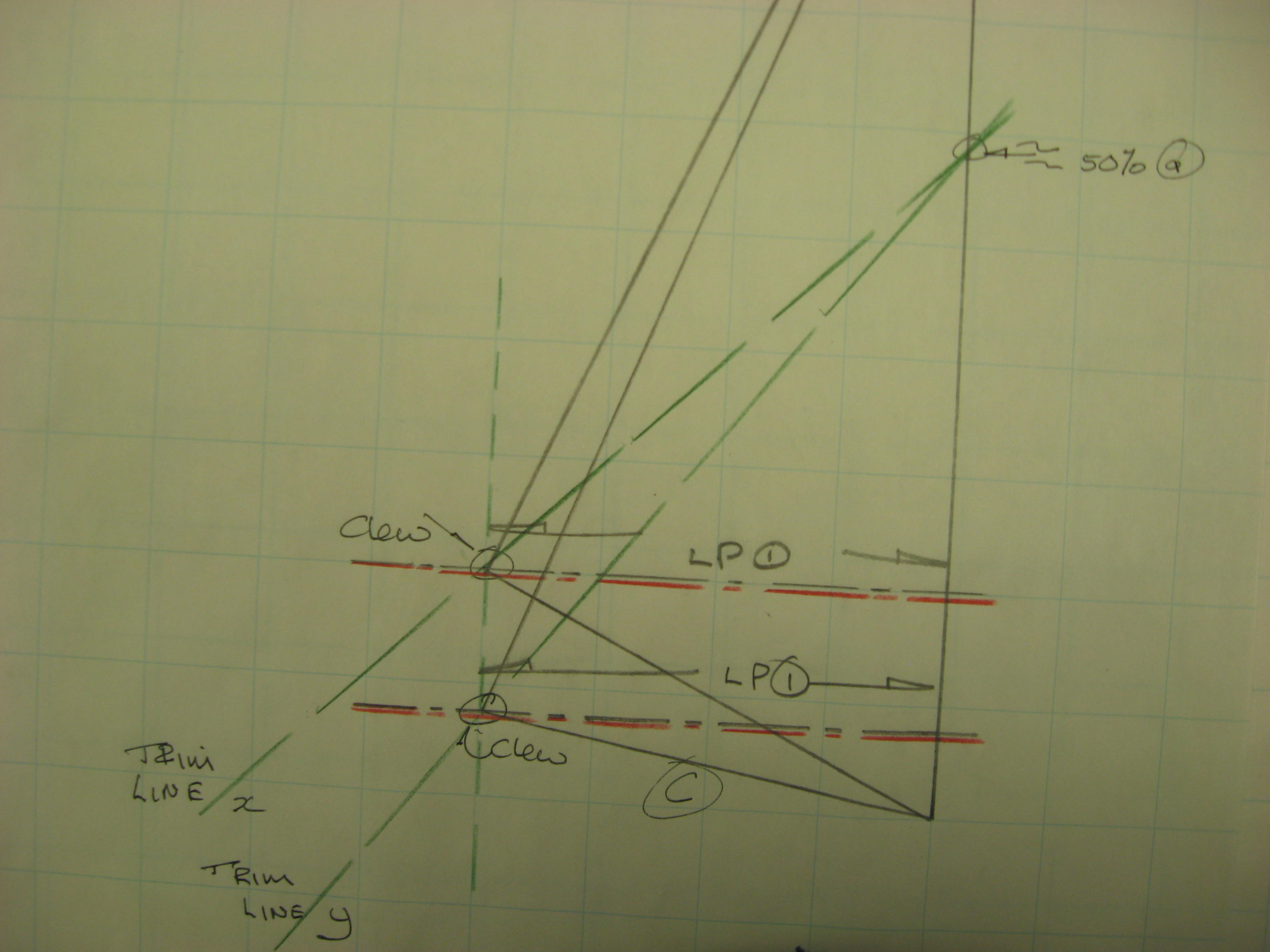One of the most quoted yet least understood phrases used in discussions about headsails, their size, is the “LP”. Customers and prospects alike use phrases like 130, 150 or 100 regularly. But when I inquire as to their understanding of the number, it is rare for the average weekend sailor to get it defined correctly. It is actually very simple. The initials L.P. stand for Luff Perpendicular, usually written as LP. This is a dimension, but not an edge, of the triangle that is a headsail. Its definition is:
“A line drawn at right angles to the luff and that passes through the clew of the sail.”

The LP is drawn from the luff of the sail and passes through the clew. The distance between the clew and the LP is “x” and the percentage of LP is then x/J.
The “size” of a headsail is determined by taking the LP length and dividing this number by the boat’s “J” The J dimension is, for the purposes of this discussion, is the distance from “the forward face of the mast at the deck to the intersection of the deck and the head stay pin at the stem head”. The J dimension and the LP are inseparably connected.
The LP number, this 150, 120 percent etc., is the length of the LP dimension divided by the boats “J”. So for example if the boat’s “J” is 10 feet and the LP dimension on a sail is 13 feet, the sail has an LP of 130%.
In the image above, there are two sets of dashed liners. the red dash lines are the LP length.The green l one, long with short dashed between is the trim line. That is the axis along which the sail will want to sheet. It is worthwhile noting too that the LP and the height of the clew of the sail are connected only by the fact that both a low clewed sail and a high clewed sail can both have the same LP.
I often am asked about all the missing area at the bottom of the sail, with respect to a high-clewed sail. There is no area missing if the sail has the desired LP. It is merely that the clew is high rather than low. The area of a genoa is arrived at by the formulae: LP x Luff length x 0.5. A moment’s reflection will indicate that the length of the foot, the most common answer to my question “what is the LP?” is incorrect.

The clew height is a function of where the sail is proposed to sheet AND the LP for the sail. And these are a function of the purpose and use of the sail.
The length of the foot of the sail is a function of the LP and the clew height.
In the move image/sketch there are two LP lines the red dashed lines. They are the same length. You can see that there are however two clew positions. The clew positions are a function of the “trim” line, basically where on the deck the sail will sheet.
So, the height of the clew is governed by several variables but is driven by firstly what sort of sail it is, for what boat, for what use, where, and then so where the sail needs to sheet. This will be discussed in another post.
Google+
